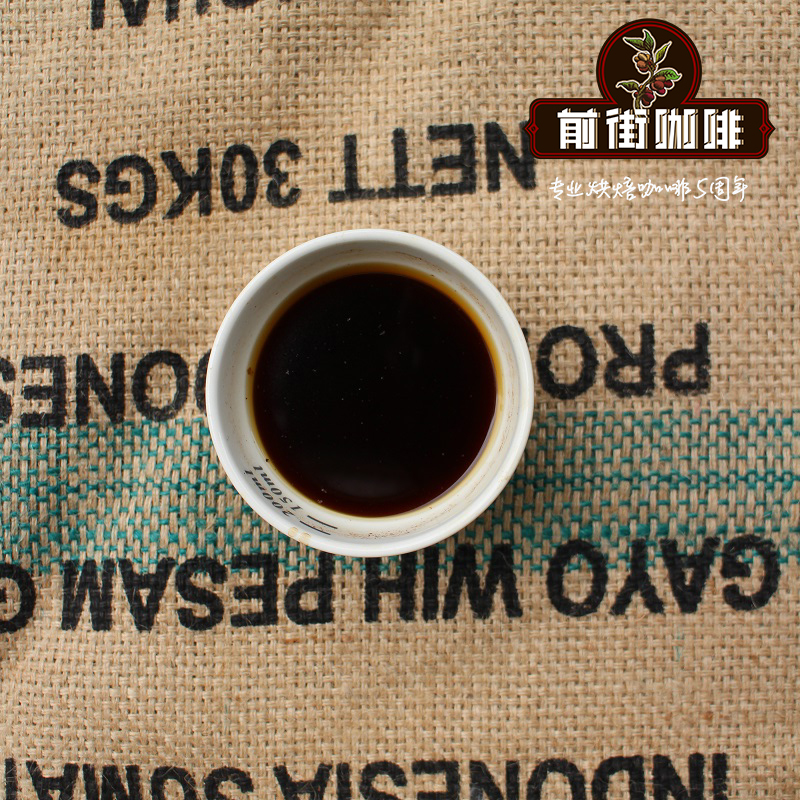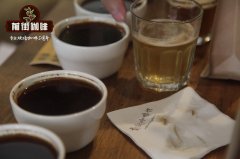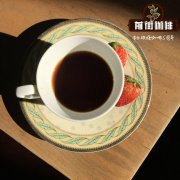The international community began to go crazy about Geisha, calling it "the champagne of the coffee world".

Professional coffee knowledge exchange more coffee bean information please follow the coffee workshop (Wechat official account cafe_style)
In 2013, the Panamanian Fine Coffee Association introduced the geisha variety to the Peterson family of Panama for the first time in 2004, and the international community has been crazy about Geisha ever since. Also known as "the champagne of the coffee world".
The Best Panamanian Coffee Award awarded by SCAP has a new finalist! It's Carl Jensen's Jensen Village horticultural geisha! Janson Geisha should be rarely heard of in China, because this manor is mainly for domestic sales and is not being done. Export; in addition, more than 50% of the manor grows Ge??isha coffee and is the second largest producer of Geisha in Panama. Carl Jensen, originally a Swiss, fell in love with the peaks and valleys of Volcan in Panama in the early 1940s and began growing coffee beans and animal husbandry on Panama's first automated farm after marrying his wife Margaret.
Jensen Farm not only has its own coffee processing plant to process coffee cherries, but also uses the best roasting methods to show the perfect cup test results.
In order to demand perfect quality, Jensen Manor will be paid $4 a day, strictly requiring workers to harvest only the most mature and beautiful ripe red coffee fruits. This area used to grow alpine avocado, which was transported directly to the capital Panama City after harvest. Because of its special flavor and dense taste, it is a high price of fruit.
The owner of the estate, Mr. Carl Janson, who was originally Swiss, came to Panama and fell in love with Volcan, a place surrounded by mountains similar to his native Switzerland. He married his wife Margaret and bought the estate in 1940. In order to maintain the balance of the natural environment, Jensen Manor operates both animal husbandry and coffee cultivation, and its family has co-operated the estate for three generations.
Now this area is dominated by coffee, and alpine avocado will be mixed among them. The manor fertilizes about 4 times a year. For the first time, after the coffee fruit is harvested, it is mainly nitrogen and phosphorus, and then paired with other trace elements.
Others will use appropriate organic fertilizers in July and September. For the last time, three weeks before the harvest period, foliar fertilizer imported from Canada will be sprayed for the final nutritional supply. No fertilizer will be applied throughout the coffee harvest season.
Sun-dried beans will be dried naturally for 4 days, depending on the weather. When the moisture content is about 40%, it will take more than 12 days to slowly dry the raw beans by machine. After each batch of raw beans are dried, they will be loaded into black grain bags, plus a layer of PP plastic woven bags commonly known as fertilizer bags, which will be cooked in the bean warehouse for 3 months to effectively prevent moisture and block light. The inherent advantages of the farm make the geisha show the most perfect flavor.
END
Important Notice :
前街咖啡 FrontStreet Coffee has moved to new addredd:
FrontStreet Coffee Address: 315,Donghua East Road,GuangZhou
Tel:020 38364473
- Prev

How do strange Geraldo coffee beans flush _ story of the producing area of Strange Giraldo Cooperative in Colombia
Professional coffee knowledge exchange more coffee bean information please follow the coffee workshop (Wechat official account cafe_style) Colombia Antioquia province strange Geraldo Colombia Antioquia Giraldo Exotico producing area information growers: Grupo Giraldo Exotico de Altura area: strange Giraldo (Antioquia province), Colombia altitude
- Next

Starbucks from a single farm how to drink coffee beans from Ethiopia's Kayong Mountain Farm?
Professional coffee knowledge exchange more information on coffee beans Please follow the coffee workshop (Wechat official account cafe_style) Ethiopian coffee beans from a single farm are scarce on the market. Therefore, we are particularly honored to share this micro batch from Guji District with you. In the past, Guji was listed as the producing area of Sidamo, but although the shape and Sida of Guji coffee beans
Related
- Detailed explanation of Jadeite planting Land in Panamanian Jadeite Manor introduction to the grading system of Jadeite competitive bidding, Red bid, Green bid and Rose Summer
- Story of Coffee planting in Brenka region of Costa Rica Stonehenge Manor anaerobic heavy honey treatment of flavor mouth
- What's on the barrel of Blue Mountain Coffee beans?
- Can American coffee also pull flowers? How to use hot American style to pull out a good-looking pattern?
- Can you make a cold extract with coffee beans? What is the right proportion for cold-extracted coffee formula?
- Indonesian PWN Gold Mandrine Coffee Origin Features Flavor How to Chong? Mandolin coffee is American.
- A brief introduction to the flavor characteristics of Brazilian yellow bourbon coffee beans
- What is the effect of different water quality on the flavor of cold-extracted coffee? What kind of water is best for brewing coffee?
- Why do you think of Rose Summer whenever you mention Panamanian coffee?
- Introduction to the characteristics of authentic blue mountain coffee bean producing areas? What is the CIB Coffee Authority in Jamaica?

